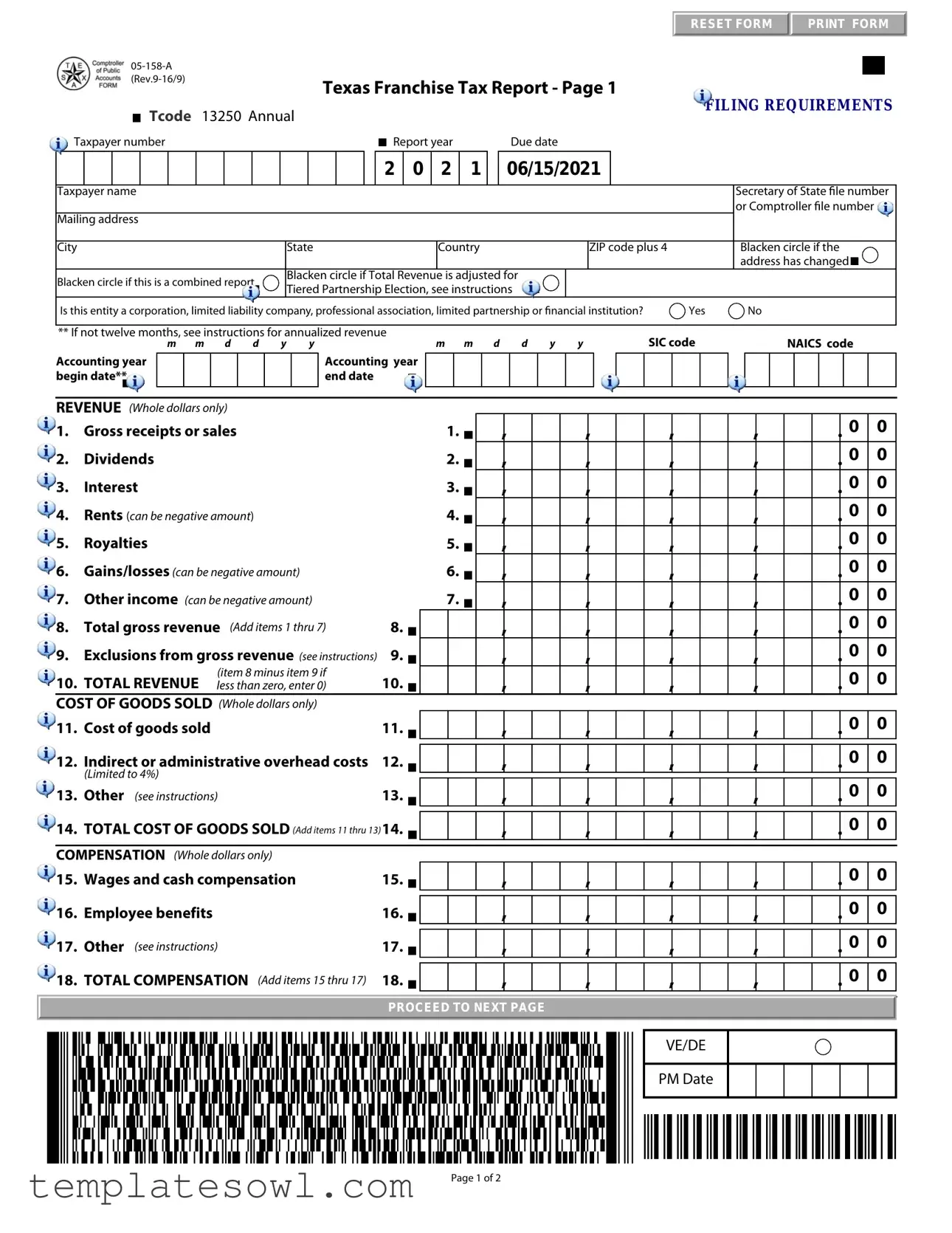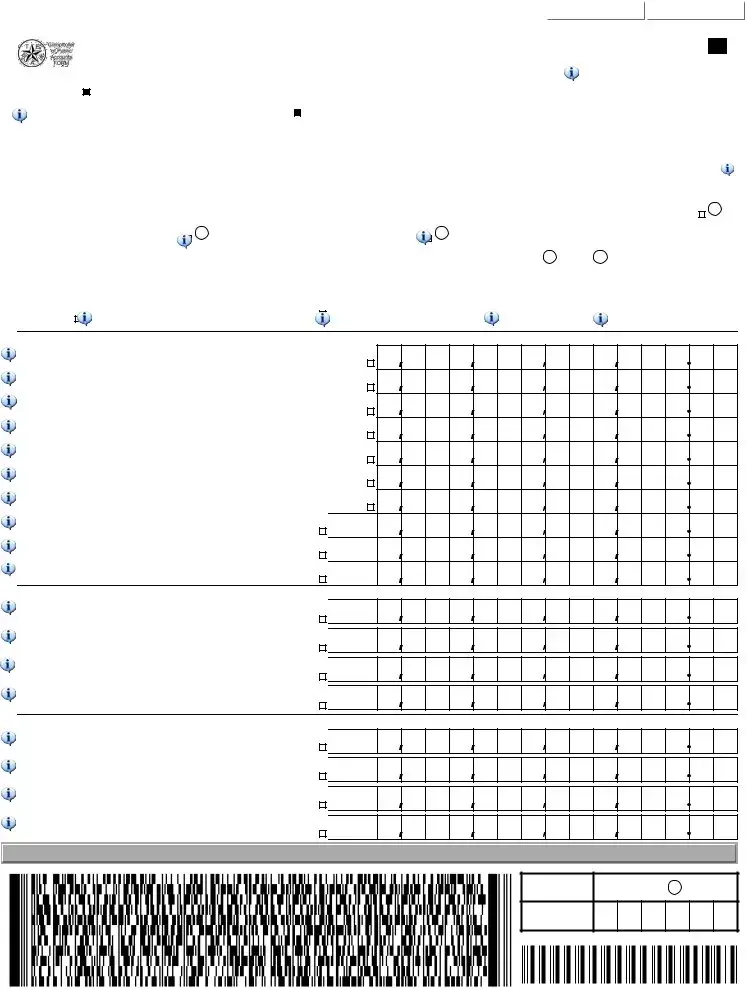What is the Texas 05 158 A form?
The Texas 05 158 A form is the Franchise Tax Report required for certain entities operating in Texas. Businesses such as corporations, limited liability companies (LLCs), professional associations, limited partnerships, and financial institutions typically use this form to report their revenue and calculate their franchise tax obligations. It must be completed annually and involves detailing various categories of revenue and expenses.
When is the Texas 05 158 A form due?
The due date for filing the form is generally June 15 of the reporting year. For example, the 2021 form was due by June 15, 2021. It's essential to file on time to avoid penalties and interest on any taxes owed. Entities that do not meet the due date may be subject to late fees.
What information is required on the form?
You will need to provide several details on the Texas 05 158 A form. Key elements include your taxpayer number, the report year, and the entity’s name and address. Additionally, you must report your gross receipts or sales, dividends, interest, rents, royalties, and other forms of income. The form also requires details about cost of goods sold and total compensation paid, which will help calculate your taxable margin.
How do I calculate the tax due on the Texas 05 158 A form?
To determine your tax due, several calculations are required. Begin by establishing your taxable margin, typically calculated by deducting specific costs from total revenue. After identifying your taxable margin, apply the appropriate tax rate as instructed on the form. Make sure to check if any tax credits or discounts apply, which will further adjust your final tax due amount.
Where do I send the completed Texas 05 158 A form?
The completed Texas 05 158 A form should be mailed to the Texas Comptroller of Public Accounts at P.O. Box 149348, Austin, TX 78714-9348. Be sure to send the original form. For more detailed guidance, you can also visit the Texas Comptroller’s website or reach out via phone at 1-800-252-1381 for assistance.




 Tcode
Tcode